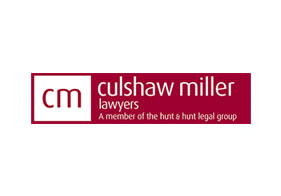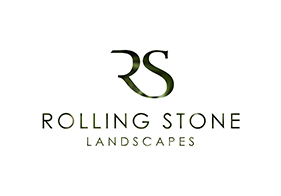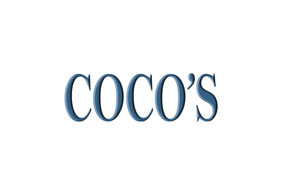Social media is an important marketing tool, especially for local businesses such as dental clinics. This is true because 71% of people use social media apps like Facebook to look for clinics near them.
At the start of 2024, 20.80 million Australians were active users of social media. This means if you want to increase your reach, attract new dental patients, or generally improve your dental marketing, you need to be more active on social media. Being active on social media begins by developing and sticking to a content calendar.
SLINKY is a leading digital marketing company specialising in helping dental practices thrive online. In this guide, we will show you how to create your own content calendar for your dental clinic. Let’s dive right in, but first, how challenging is it to manage social media?
The Challenge of Social Media Management
The truth is that it can be a challenge to manage social media. Still, it’s a necessary tool for growing your dental practice. Without a social media calendar, you run the risk of losing track of your schedule for posting, ultimately affecting your engagement.
Consistency is one of the main challenges of social media management. In this context, being consistent means having a uniform brand voice for every post and sticking to a specific posting schedule.
You might think that achieving consistency is hard, but it’s not. This is why we advocate for a social media calendar for your dental practice. We’ll get to that in a second. Let’s first explore the elements of a social media calendar.
What is a Social Media Calendar?
A social media calendar is an organised plan that outlines the content you intend to share with audiences on different platforms. And, it’s not just about scheduling posts. Think of it as a guiding plan to success in social media.
- It can be as simple as a spreadsheet or as complex as a dedicated software dashboard.
- The key is to find an easy format for you to read, edit, and share with your team members who are involved in managing your social media accounts.
Some of the features of a social media calendar include;
- An organisation tool: A social media calendar keeps you organised by planning out your posts weeks or even months ahead. This removes the daily struggle to come up with content ideas.
- A quality control mechanism: When you plan your posts, you have more time to develop high-quality content that is aligned with your marketing goals.
- A trend tracker: The calendar allows you to be prepared by planning content around relevant holidays, events, and trends. This approach ensures you are consistently engaging with a broader audience and maximising your social media impact.
- A performance analyst: Your social media calendar can be a powerful tracking tool to analyse the performance of your social media efforts. Monitoring posts that your audience likes the most and website traffic helps you tweak the approach you use and optimise what’s already working.
Why Your Dental Practice Needs a Social Media Calendar
Social media marketing is a subset of digital marketing. Effective digital marketers use strategies to plan, execute, and manage marketing campaigns. A social media calendar is always included as an item in the strategy.
Research shows that of the 80% of companies that use digital marketing strategies, only half of that stick to a content calendar. A lack of understanding of the benefits of this key element of social media marketing is what contributes to such low numbers.
Benefits of a Social Media Calendar
The following is what you stand to gain when you use a social media calendar for your dental marketing on social media platforms.
1. A calendar helps dentists maintain a consistent posting schedule
Like we said earlier, a calendar helps you post consistently, which is important for increasing visibility and brand awareness.
Avoid being like most people who post a quick Facebook or Instagram post based on a hunch. Instead, have your marketing team research the most valuable content pieces and plan when to post them. When you’re consistent, you learn patterns too, including identifying the best time to post for optimal engagement.
2. Planning and scheduling content in advance saves you time
Social media marketing is not a walk in the park. It is a time-consuming task, which might derail your attention from doing your actual job which is dental care. This explains why most dental clinics hire marketing experts to help them with dental marketing.
A content calendar saves you time since you will have planned ahead of what to post based on a marketing strategy. Posting unplanned content puts you at risk of posting irrelevant content that does not contribute to engagement.
3. Planned content leads to increased audience interaction
At SLINKY, we believe that the goal of social media marketing is not just to get noticed. It’s also about building relationships with your audience to give them a sense of community. If anything, that’s all social media is about.
A content calendar can help you achieve this because you will learn patterns as you post often. These patterns include when people are most likely to engage with your content and this will help you optimise.
Your audience needs to feel like they’re part of the brand, regardless of whether they are your clients or not. If they’re prospects, you will have to adopt social media conversion marketing strategies to get them to sign up.
How to Create a Killer Dental Social Media Calendar
Creating a social media calendar should be a systematic approach. In other words, before you decide when and what you’ll be posting on your social media accounts, there is a lot of behind-the-scenes work you need to do. Think of it as strategic planning. In this section, we will go over everything that you need to do to create a thorough content calendar.
Step 1: Define Goals and Target Audience
Start by asking yourself a simple question; Why am I posting on social media? The simpler the question, the better you can answer it. Typically, most people, especially in business, post on social media to increase brand awareness, generate new leads, or promote specific services. These objectives can either be time-bound or ongoing.
Dental marketing objectives can be time-bound or ongoing. To clarify, you can set a goal like promoting specific services when you launch the service. On the other hand, goals like increasing brand awareness and generating leads run throughout.
Your goals will be defined by your target audience. A target audience is the ideal demographic you expect to engage with your content. This demographic will help you decide the best platforms to use and the messaging to adopt. Perform customer avatar research to identify your ideal target audience.
Step 2: Choose the Right Social Media Platforms
Are you wondering what platform you should direct your efforts to maintain a presence for your dental practice on social media? That’s a dilemma for most people. For one, your ideal clients use more than one social media account.
Recent data shows that most users visit an average of 7 social media platforms every month, with YouTube leading the pack, followed closely by WhatsApp, Facebook, and Instagram.
So, where do you direct your efforts? Let’s start by understanding the features of common social media platforms;
- Facebook: Large audience base, versatile features for sharing content, and effective advertising options.
- Instagram: Visual-focused platform ideal for showcasing patient transformations, office environment, and behind-the-scenes content.
- YouTube: Perfect for in-depth educational videos explaining procedures, sharing tutorials, and building authority.
- TikTok: Growing platform to reach younger audiences with short, engaging videos.
- LinkedIn: Professional networking platform for connecting with peers, showcasing credentials, and attracting potential employees.
The platform you choose among these depends on the kind of content you want to share with your audience. A general rule of thumb suggests that you should use at least three and tailor content to fit the platform.
One of the data points you will uncover when performing customer research is which social media platform they’re most likely to be active on. Therefore, you can use that to narrow down your top three platforms.
Step 3: Plan and Create Engaging Content
This is the ultimate step in the whole process because the type of content you share on social media determines your likelihood of achieving the set goals. The keyword to note here is engaging. Remember, social media is all about driving engagement.
The common aspects that make social media content engaging are relatability, relevance, emotional appeal, and clear call-to-actions (CTAs). If your content manages to capture all these, your dental marketing efforts will definitely bear fruits.
Some ideas of engaging content that would work for dental clinics include;
- Educational posts: Share oral health tips, explain procedures, and answer common questions. Best for Facebook.
- Behind-the-scenes content: Introduce the team, showcase the office environment, and highlight office events. Best for YouTube and TikTok.
- Patient testimonials and success stories: Build trust and social proof by sharing positive patient experiences. Best for Facebook.
- Before-and-after photos: Highlight treatment results and demonstrate expertise. Best for Instagram.
Creating content might be expensive and time-consuming if you don’t have the experience. Therefore, you can seek professional services since you’re guaranteed results.
Step 4: Set a Consistent Posting Schedule
After you have created a solid plan on how to create engaging content, you need to find and stick to a posting schedule.
A posting schedule entails the posting frequency for each platform and the specific time of day when to post. The frequency depends on the engagement level for each platform. Here is a general guideline you can use;
- Facebook: Post 3-4 times per week.
- Instagram: Post 3-5 times per week.
- Twitter: Tweet 3-5 times daily.
- LinkedIn: Post 1-2 times weekly.
As you can see, some platforms require a high frequency of posting. Primarily, this is because of the high amount of content shared across the platforms.
To determine the best times to post, you’ll need to analyse your audience engagement activity to spot the time when there is high engagement. You can also conduct A/B tests to gather data on the level of activity based on time. What’s left now is to stick to a consistent schedule as we discussed earlier. Luckily, there are tools for that.
Step 5: Utilise Scheduling and Automation Tools
We get that to err is human, which means that you might forget your posting schedule and ruin your streak. No one wants that, and that’s why there are several tools to automate mundane processes.
Social media scheduling tools for dental marketing have helpful features such as bulk scheduling, content suggestions, advanced analytics, among others. These beat the good ol’ spreadsheet tracking templates we’re all used to.
The standard scheduling tools you can try include;
- Buffer
- Hootsuite
- Social Champ
- Later
Additionally, some social media platforms have integrated native scheduling features that you can use. The best part is that they’re practically free. However, they might be limited, and in that case, you can pay for these third-party tools.
Step 6: Track Performance and Optimise the Calendar
Everything that gets measured? That’s right, get managed. You can only determine if your dental marketing efforts are paying off by tracking the performance over time.
Specifically, measure the impact of sticking to a schedule on engagement. You can also analyse the engagement level on specific posts to determine what kind of content your audience resonates with the most.
Investing more effort in the content with the most engagement helps you achieve your goals faster. Metrics that you should focus on here include reach, engagement (likes, comments, shares), website clicks, and conversions. With this data, you can now optimise your content calendar.
For instance, if your analytics reveal that a large portion of your audience is interested in cosmetic dentistry, you can create content focusing on topics like veneers, teeth whitening, and smile makeovers.
Take Your Dental Marketing To The Next Level
Marketing your dental clinic on social media doesn’t have to be hard if you do it right. If you understand the fundamentals, you can create a conversion machine without spending on expensive and ineffective PPC ads.
Here at SLINKY, we have the expertise needed to fully manage your social media presence so that you can focus on what matters: your patients. Contact us now for a free consultation to help you get started.

























